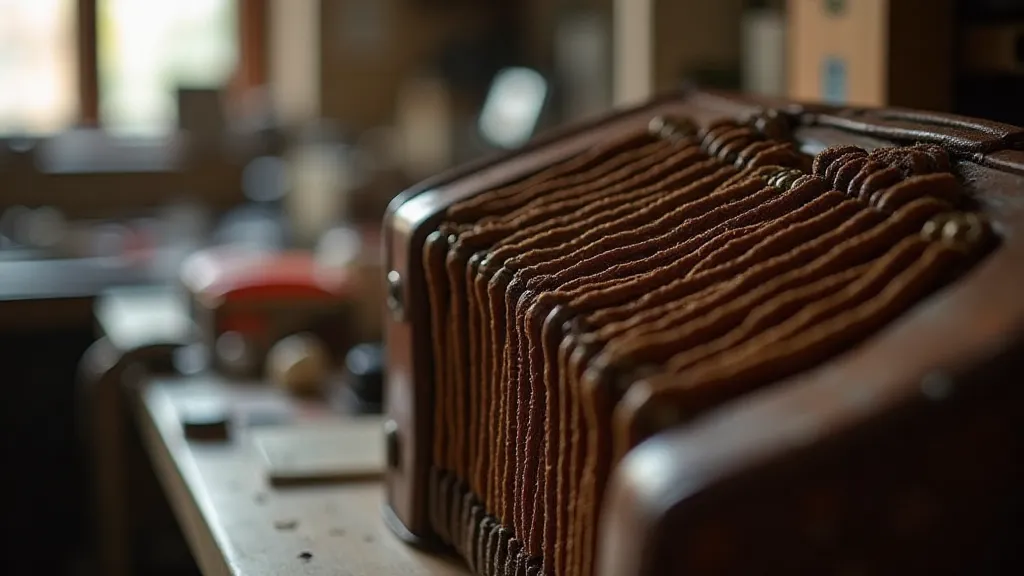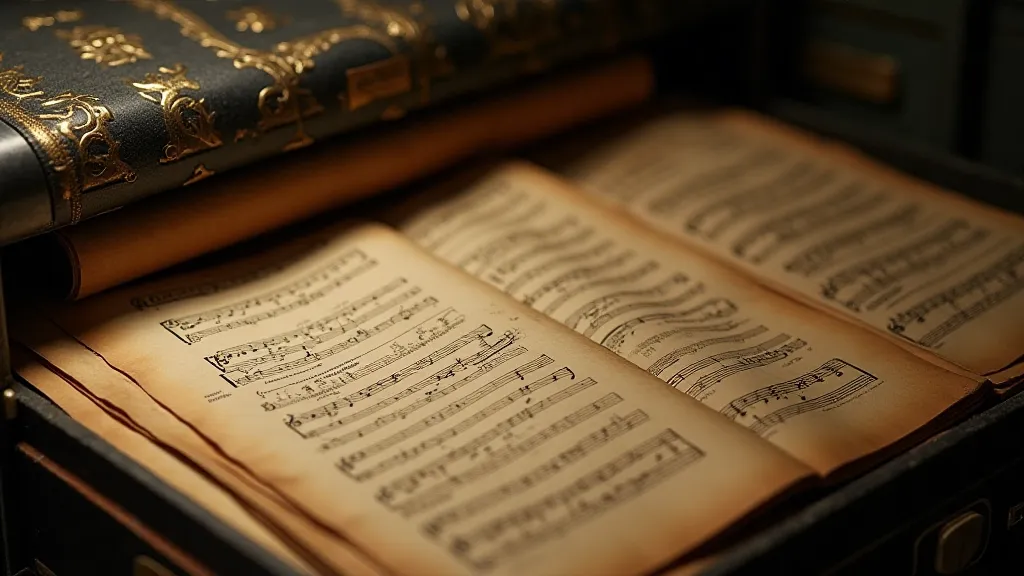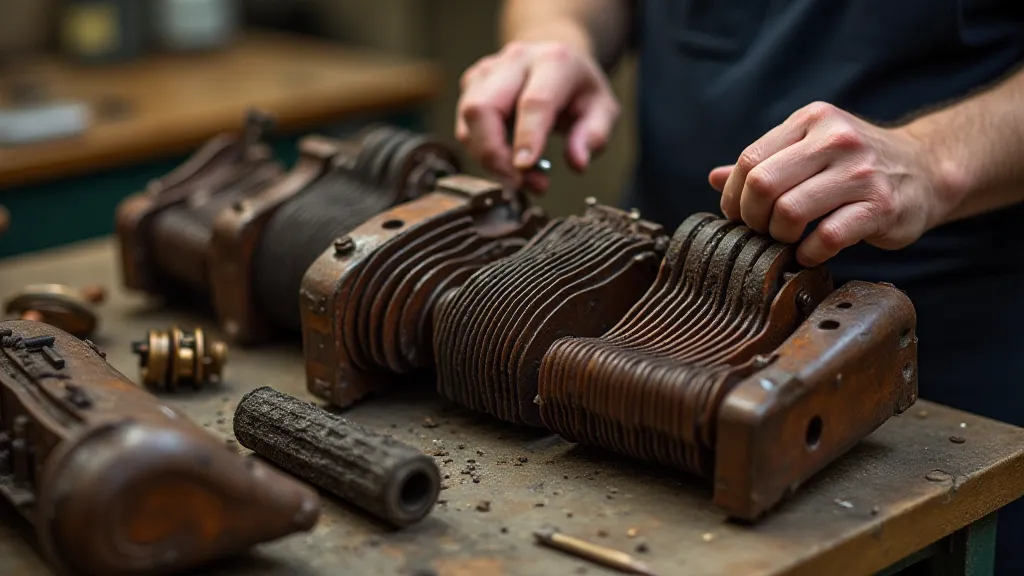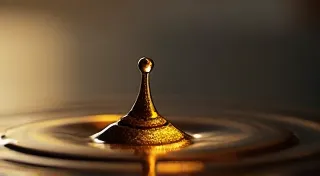The Archivist's Query: Deconstructing a Damaged Accordion’s Provenance
There’s a peculiar beauty to objects imbued with history. A worn leather armchair, a chipped teacup, a pocket watch with a fractured face—they whisper stories of past lives, of moments lived and loved. Antique accordions, in particular, hold a special resonance. More than mere instruments, they are physical embodiments of musical heritage, often survivors of wars, migrations, and countless performances. The process of restoring one isn't just a mechanical act; it's a form of archaeological excavation, a painstaking effort to piece together a fragmented narrative.
I remember my first significant restoration project – a late 1920s Excelsior from Czechoslovakia. It arrived in my workshop in a truly lamentable state: bellows riddled with holes, keys stuck, reed blocks corroded. While the immediate challenge was mechanical, a deeper curiosity took hold. Who had played this instrument? Where had it traveled? What music poured from its keys?
Understanding an antique accordion’s provenance – its history and ownership – is a detective’s game, a blend of meticulous observation and informed guesswork. It's a journey into a world of complex craftsmanship and often-hidden clues. The intricacies of antique instrument construction often draw parallels with other repair disciplines, prompting some to consider The Luthier’s Kinship: Parallelism Between Accordion and Stringed Instrument Restoration – a fascinating perspective on shared skills and historical techniques.

The Markings: Initial Clues
The obvious place to begin is with the markings. Many antique accordions bear maker’s marks, serial numbers, and sometimes even earlier ownership inscriptions. These aren’t always straightforward. Early accordion manufacturers, especially in Europe, often used evocative names – “Melody Queen,” “Harmonissima,” “Accordion Royal” – which can be beautifully misleading. A thorough search requires examining every surface: the reeds, the bellows, the keys, the instrument’s casing, and even under the keys themselves. Sometimes markings are faded or obscured by years of grime, requiring careful cleaning and, in extreme cases, the use of specialized lighting techniques.
Serial numbers, while invaluable, aren't always perfectly documented. Manufacturers’ records were often lost or destroyed, particularly those impacted by wars. However, collectors and researchers have amassed significant databases correlating serial numbers with production years and models. These databases are essential resources for assigning a tentative production date. Even a rough estimate can drastically narrow down the potential history of the instrument.
Construction and Materials: Unveiling Origins
Beyond the markings, the accordion’s construction itself provides crucial clues. The materials used, the techniques employed, and the overall design style all reflect the era and location of manufacture. Early accordions, for instance, often featured hand-shaped reeds – a testament to the skill of the reed makers. The type of wood used in the casing, whether it's mahogany, walnut, or birch, can also indicate geographical origins. Mahogany, for example, was frequently used by German and Austrian makers, while Italian accordions often showcased the warmth of walnut.
The bellows, too, tell a story. Early bellows were typically made of leather – often sheepskin or goatskin – meticulously shaped and stitched. The quality of the leather, the stitching technique, and even the type of thread used can offer insights into the maker’s expertise and the instrument’s value. Later accordions transitioned to materials like canvas and synthetic fabrics, marking a shift in manufacturing practices. The precision required to assemble these intricate mechanisms is truly remarkable and can sometimes be better understood by those versed in the principles of The Clockmaker’s Precision: Dissecting the Intricate Mechanics of a Reed Block.
The Music Within: Styles and Repertoire
Consider the repertoire the accordion was likely used for. Early accordion music was often tied to folk traditions – Polkas, Waltzes, and Ländler. The tuning of the instrument itself could be a clue. Some accordions were tuned to specific keys or scales to cater to particular regional musical styles. Knowing the prevailing musical trends of the instrument’s estimated production period can provide valuable context. Researching sheet music from that era can also sometimes reveal specific manufacturers or dealers who promoted particular accordion models.

Dating Components: A Detailed Examination
Sometimes, the accordion's overall appearance might suggest one origin, while closer inspection reveals conflicting elements. This is common. Parts were often sourced from different manufacturers, and instruments were frequently repaired and modified over their lifetimes. The state of the reeds, for example, can be surprisingly revealing. The style of reed construction, the metal alloy used, and even the presence of wear patterns can provide clues about their age and origin. Examining the button pads and key covers is also crucial. The materials, patterns, and manufacturing techniques used to create these components can significantly narrow down the instrument’s age range.
Personal Stories: Echoes of the Past
The most poignant discoveries often come from personal inscriptions or modifications. I've encountered accordions with names carved into the casing, ownership marks etched into the reed plates, and even faded photographs tucked inside the instrument's lining. These aren't just details; they's whispers of the past, connecting us to the people who cherished these instruments.
One particularly moving example involved an accordion I restored for a woman whose grandfather had played it during his time in a traveling circus in the 1930s. The accordion bore a faint inscription: "To Papa, May Your Music Bring Joy." That simple phrase transformed the restoration from a mechanical project into a deeply personal experience, a tribute to a man whose life was intertwined with the music of this remarkable instrument.

Beyond the Mechanical: Understanding Tuning and Innovation
The evolution of the accordion is a fascinating study in innovation. While the traditional diatonic and chromatic models remain popular, there’s a rich history of experimentation with alternative tuning systems. These systems often sought to expand the instrument's versatility, allowing players to explore unique musical landscapes. Understanding these less-common approaches requires a broader understanding of instrument design and its connection to evolving musical tastes. Those interested in this facet of accordion history might find Achromatic Dreams: Experimenting with Alternative Tuning Systems on Antique Accordions particularly enlightening.
Regional Variations and Design Clues
The accordion, like many instruments, displays distinct regional variations in design and construction. German accordions often prioritized robust construction and a focus on sturdy functionality, while Italian instruments frequently emphasized aesthetic beauty and a warmer, more expressive tone. These differences aren’s merely superficial; they reflect the cultural values and musical traditions of the regions where they were crafted. Careful observation of these details can provide valuable clues about an accordion's origins.
The Role of the Restorer: More Than Just a Mechanic
The work of an accordion restorer extends far beyond the mechanical aspects of repair. It's a process of historical investigation, a detective’s game that requires patience, meticulous observation, and a deep appreciation for the instrument’s cultural significance. Each restoration project is a unique opportunity to connect with the past, to safeguard a piece of musical heritage for future generations. It's a privilege to be an archivist of sound, a guardian of these echoes from the past.
A Continuous Journey
Unraveling an antique accordion’s provenance is rarely a straightforward process. It’s a puzzle with missing pieces, a tapestry woven from conjecture and informed deduction. It requires patience, a keen eye for detail, and a deep appreciation for the history embedded within these extraordinary instruments. But the rewards—the chance to glimpse into the lives of those who played them, and to safeguard a piece of musical heritage—are immeasurable. It’s a privilege to be an archivist of sound, a guardian of these echoes from the past.




